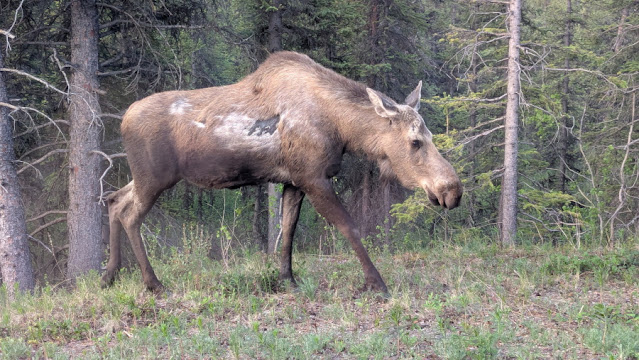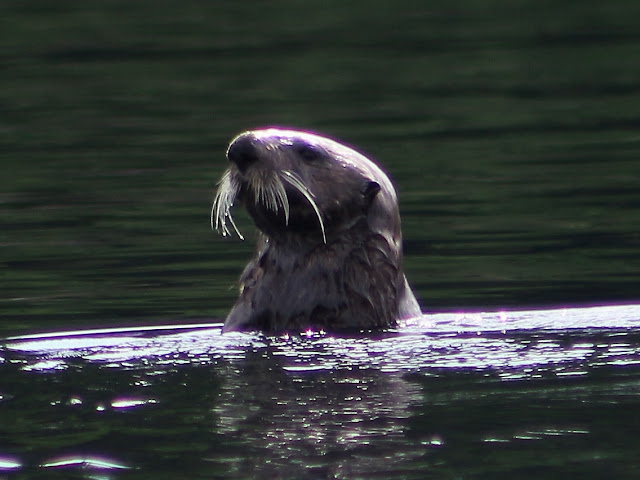It's always comforting to return to the lake whether I've been away for a day or a month. The enormity of a place like Alaska dwarfs the entire state of New Hampshire, but this small verdant patch of our planet has a charm that's truly special. How fortunate are we to able drive along a quiet stretch of road and see one of the iconic birds of the Northern Hemisphere incubating it's eggs?
 |
| Many people put seeing a single loon on their life-list. |
This nest is in a good spot to be protected from boat traffic and is far enough off the road to not be bothered by cars. You can see it at the first opening where you see the lake on Chemung Road when coming from Meredith Center. Bring a pair of binoculars and scan the small islands in the cove - you won't bother it.
Hopefully this pair has survived the floods and a couple days of record heat this week and is carefully tending one or two viable eggs because it appears the northern-territory pair isn't going to have a nest this year. I've seen a pair in the northern territory together with no recent signs of nest-building
Perhaps you saw this photo in the Laconia paper:
Assuming we do have a chick or two in a couple of weeks, there will be plenty more challenges for these birds to deal with!
There are other signs of nature to be found on a slow walk along country roads. This small disturbed area caught my eye, and looking closer I found the tell-tale sign of a turtle nest.
 |
| An excavated Painted Turtle nest. |
Painted turtles clamber out of the lake to find suitable nesting sites in soft gravel, sometimes having to travel long distances especially when the riparian area around a lake or stream has been developed. They often find the first suitable spot along the shoulder of a road - which presents a couple of problems. One is obvious from the number of squashed turtles in roads from car tires. The other is the lack of protective cover as raccoons, fox, skunk, and crows also travel the roads looking for road kill. When any of these come across a turtle nest they dig right because fresh turtle eggs, like chicken eggs, are an excellent source of much needed protein.
 |
| Consumed turtle eggs. |
Fortunately, the populations of both turtle species we have in Wicwas (painted turtles and snapping turtles) are strong.
If you're on or near the water, especially in a small boat, look closely at the aquatic vegetation growing at the shoreline. Many of our dragonflies and damsel flies are now emerging from their larval stage in the lake and drying out their wings for flight.
You can find them doing this all summer long early in the morning to dry off nighttime dew.
I led a walk on the Laverack Nature Trail in Meredith Village with the Taylor Community this week. Many fruiting trees are now in blossom along the boardwalk; we found native dogwood, winterberry, and many others.
 |
| Silky Dogwood |
Come fall and winter these provide valuable food for birds. There are also blueberries with fruit already set; it looks like it might be a good blueberry season. If you haven't been to the Laverack Trail (or even if you have!) this fully accessible trail is always worth a visit.























































